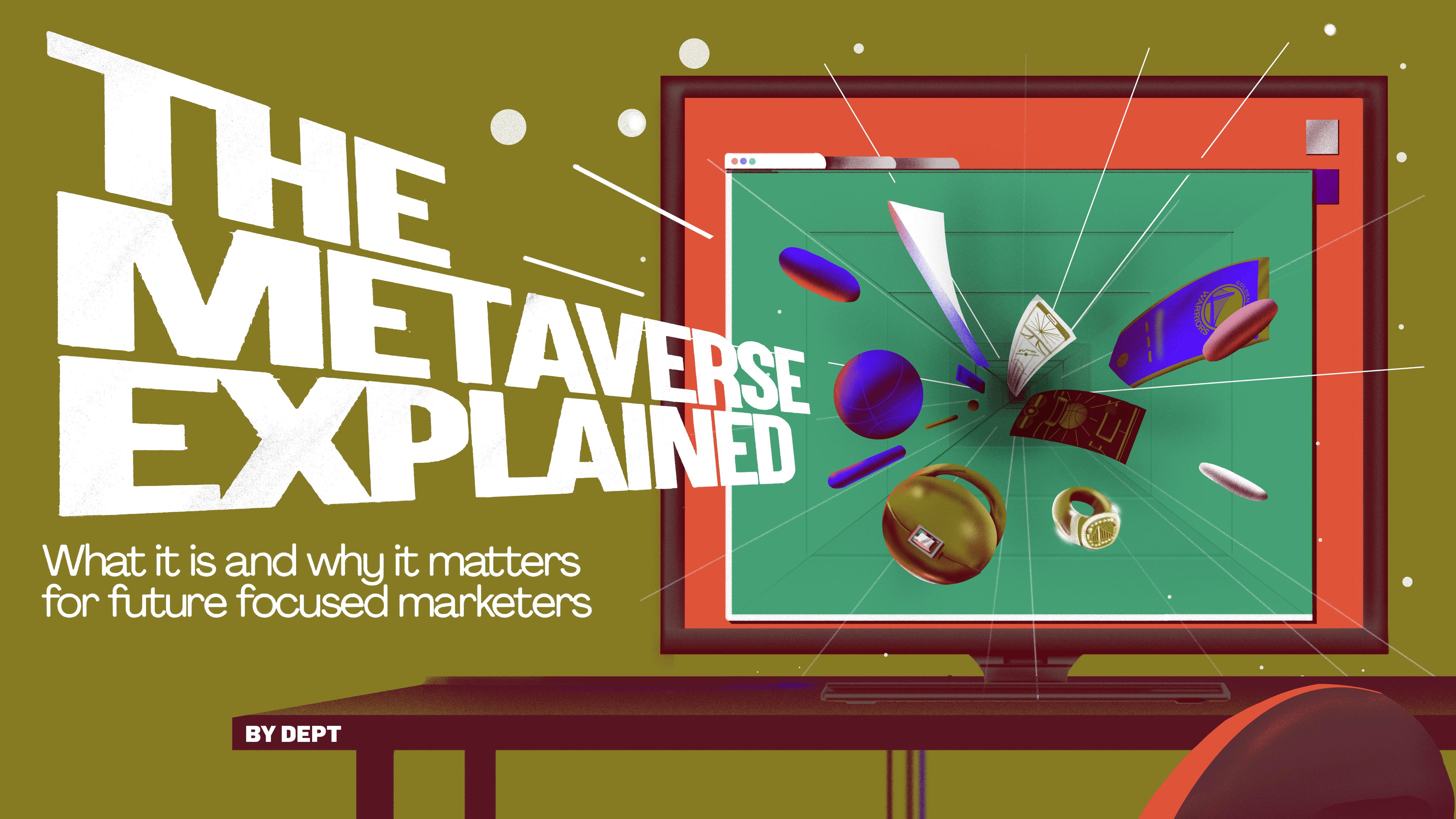
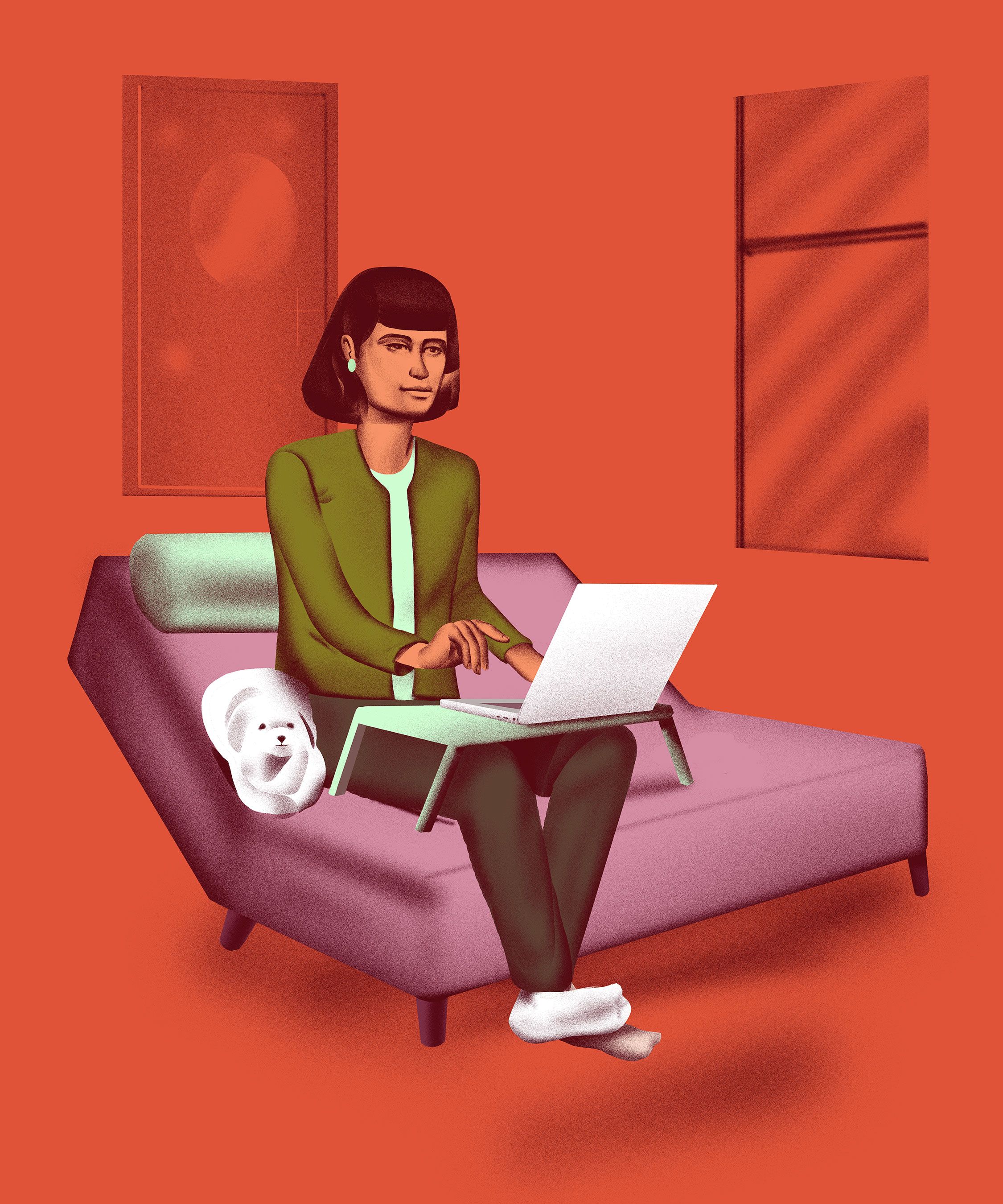
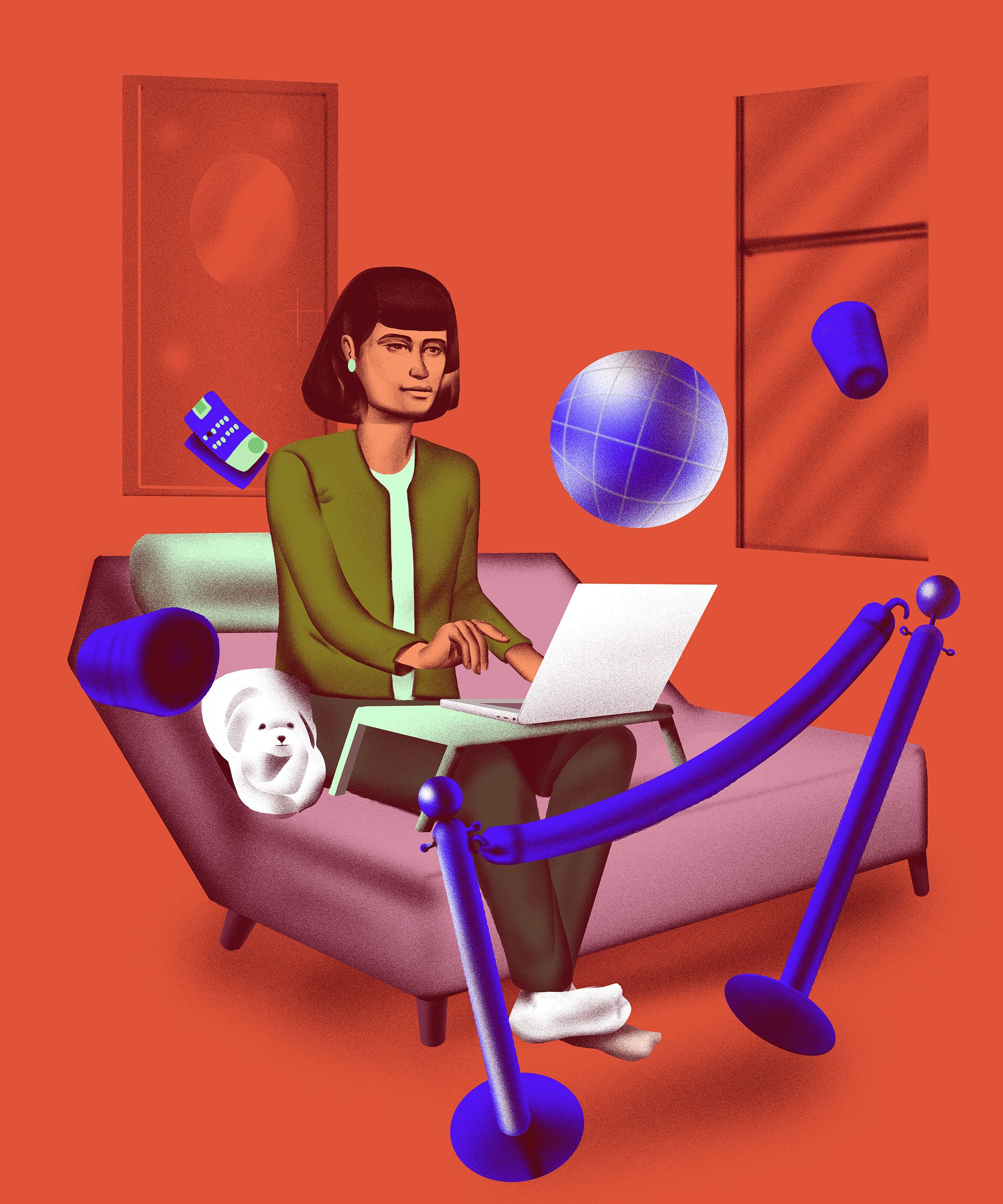
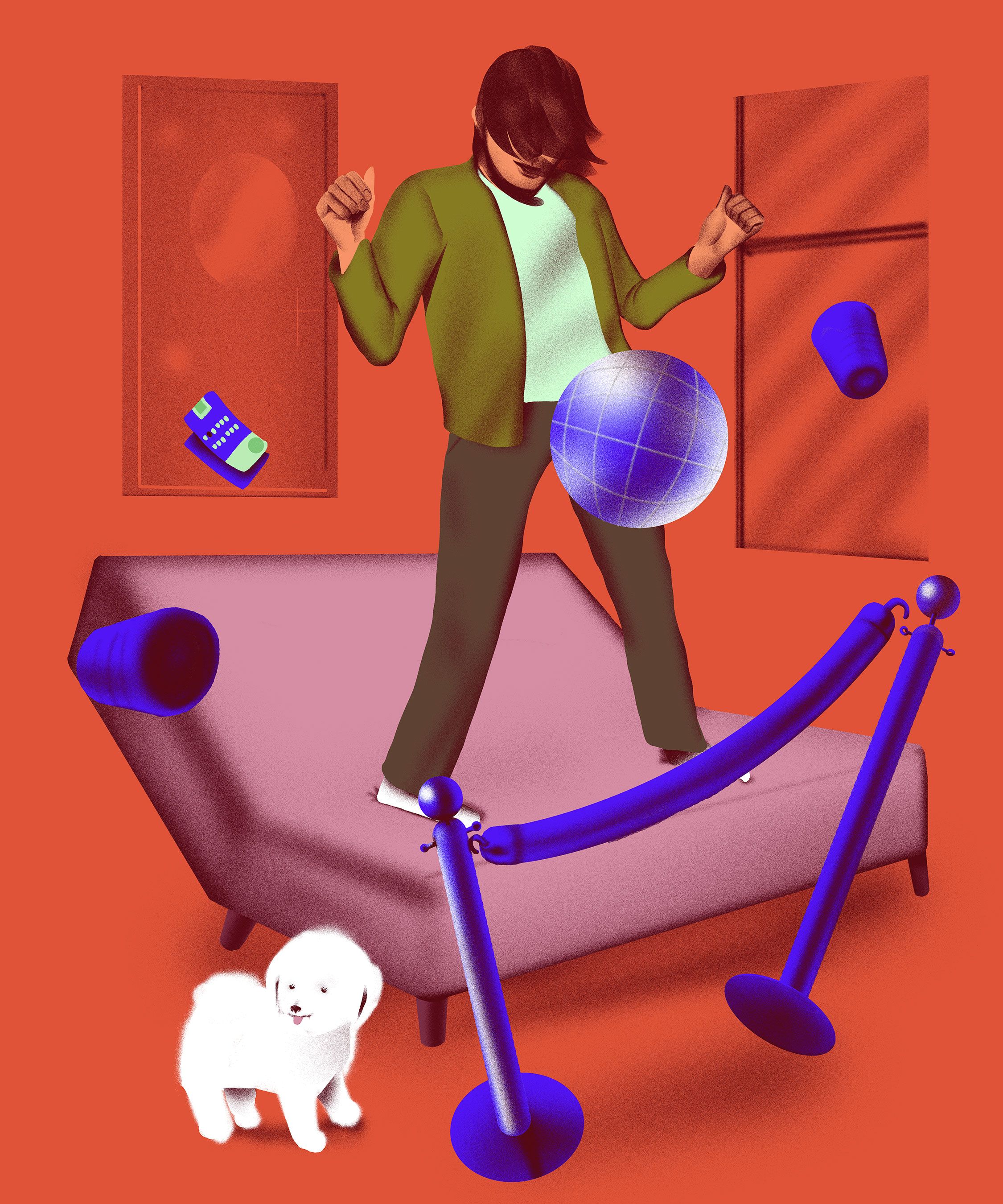

Imagine this: You’re attending a live performance by your favorite musician, jamming in the outfit you spent weeks picking out and fist-pumping with your fellow concertgoers. Sounds like a normal concert experience, right?
But this concert is taking place in the metaverse. You’re not at an arena; you’re actually sitting in your living room. Your virtual seat is occupied by your avatar. The outfit you picked out to wear is getting noticed because an NFT ensures it is virtual couture. The fist pumps around you are coming from other avatars.
You’ve likely heard the term “metaverse” tossed around or seen it in the headlines, but what is it and why does it matter to you as a marketer?
The first thing to understand is that the metaverse isn’t and won’t be one thing or place. It’s more of a catch-all term to describe how digital experiences will evolve into something where the lines between the digital and physical are blurred. The idea was first coined by Neal Stephenson in his 1992 novel Snow Crash to describe a 3D world inhabited by digital people. It has been repurposed to describe the general idea of a virtual, interactive 3D environment.
But it’s not the 90s, and big things are happening fast to make the metaverse a reality.
Technological advances in software and hardware are coming to fruition. And consumers, partly thanks to the pandemic, are warming up to the idea of spending time online socializing, dating, playing and doing other things that used to happen mostly offline.
Tech companies are throwing their hats in to make the metaverse happen, too. As of this writing, Facebook renamed itself Meta to reflect its metaverse ambitions and announced it will make 10,000 hires over the next five years to help develop its portion of the metaverse. Microsoft said it’s positioned to help companies develop metaverse apps through its suite of AI and mixed reality tools. And Google is at work on Project Starline, a tool described by Wired as hyper-telepresence that will close the gap on virtual calls.
The speed and intensity of these investments point to big things to come. For brands, there is the opportunity to create a fully realized, 3D immersive experience and redefine customer relationships. More on this later. The metaverse creator community is also shaping up to be the next wave of influencers and the possibilities for collaborations and sponsorships are just starting to take shape.
Excited? A bit confused? Stick with us and keep scrolling as we dive into everything you need to know about the metaverse to prepare to use it to create deeper customer connections and new brand experiences, and of course, sound smart at your next virtual happy hour.

Imagine this: You’re attending a live performance by your favorite musician, jamming in the outfit you spent weeks picking out and fist-pumping with your fellow concertgoers. Sounds like a normal concert experience, right?
But this concert is taking place in the metaverse. You’re not at an arena; you’re actually sitting in your living room. Your virtual seat is occupied by your avatar. The outfit you picked out to wear is getting noticed because an NFT ensures it is virtual couture. The fist pumps around you are coming from other avatars.

You’ve likely heard the term “metaverse” tossed around or seen it in the headlines, but what is it and why does it matter to you as a marketer?
The first thing to understand is that the metaverse isn’t and won’t be one thing or place. It’s more of a catch-all term to describe how digital experiences will evolve into something where the lines between the digital and physical are blurred. The idea was first coined by Neal Stephenson in his 1992 novel Snow Crash to describe a 3D world inhabited by digital people. It has been repurposed to describe the general idea of a virtual, interactive 3D environment.
But it’s not the 90s, and big things are happening fast to make the metaverse a reality.
Technological advances in software and hardware are coming to fruition. And consumers, partly thanks to the pandemic, are warming up to the idea of spending time online socializing, dating, playing and doing other things that used to happen mostly offline.
Tech companies are throwing their hats in to make the metaverse happen, too. As of this writing, Facebook renamed itself Meta to reflect its metaverse ambitions and announced it will make 10,000 hires over the next five years to help develop its portion of the metaverse. Microsoft said it’s positioned to help companies develop metaverse apps through its suite of AI and mixed reality tools. And Google is at work on Project Starline, a tool described by Wired as hyper-telepresence that will close the gap on virtual calls.
The speed and intensity of these investments point to big things to come. For brands, there is the opportunity to create a fully realized, 3D immersive experience and redefine customer relationships. More on this later. The metaverse creator community is also shaping up to be the next wave of influencers and the possibilities for collaborations and sponsorships are just starting to take shape.
Excited? A bit confused? Stick with us and keep scrolling as we dive into everything you need to know about the metaverse to prepare to use it to create deeper customer connections and new brand experiences, and of course, sound smart at your next virtual happy hour.

The metaverse is, in the words of essayist Matthew Ball, the successor state of the mobile internet. It can be described as a multifaceted digital experience that mirrors our physical reality and also allows for entire new types of experiences. It’s not hosted or owned by one company, but rather a virtual space where businesses, people and information interact in a 3D setting. It’s an immersive universe where you can attend a business meeting, buy a suit for said meeting and have virtual drinks with your colleagues afterward, all without physically leaving your home. It’s this and so much more. In its totality, it will become the gateway to most digital experiences and a component of physical ones.
Right now, the most common way to participate in the metaverse is through games like Fortnite or Roblox. There are also independent immersive brand experiences along with other ways to work, shop and play.
In the future, the metaverse will be something you experience and interact with through services or apps that facilitate work, play, shopping and pretty much any other activity you can think of. The barrier between the physical and digital worlds will have been lowered and people will be constantly living in or moving back and forth in via their phones, smartglasses, VR goggles, smart speakers or other technologies. While these things do exist in our world today, in the metaverse they will be hyper-powered versions that employ 5G, AI and other matured technologies to facilitate life-like interactions and visuals.
For this future to be realized, tech and brand players need to commit to interoperability. Basically, this means that you can move yourself, your possessions and any other digital assets between places in the metaverse. The idea is for a free and open space where you can easily move from one experience or event to another.
So, how far away is this future and what needs to happen for the metaverse to become a part of daily life?
There is no one thing that needs to happen or switch that needs to be flipped for the metaverse to come online. In some ways, it’s already here and it makes sense to begin strategizing how you will fit into it. As companies continue to make investments and technology like spatial cameras and 5G networks become more available, it will gradually become part of our lives. There is also a need to create protocols or rewrite the rules of the internet to enable interoperability and create expectations or ways of being in the metaverse.
Futurists and technologists are hard at work on these challenges. At the recent Dept Meta festival, people like Meta AR specialist and creative strategist Dan Moller and Decentraland head of partnerships Adam De Cata took on some of these questions and discussed things like: What does the extended self look like in the digital universe? How can brands execute next-level personalization? What is the future of ownership? These are the types of questions defining the development of the metaverse and staying on top of them will be crucial to securing your place in it.
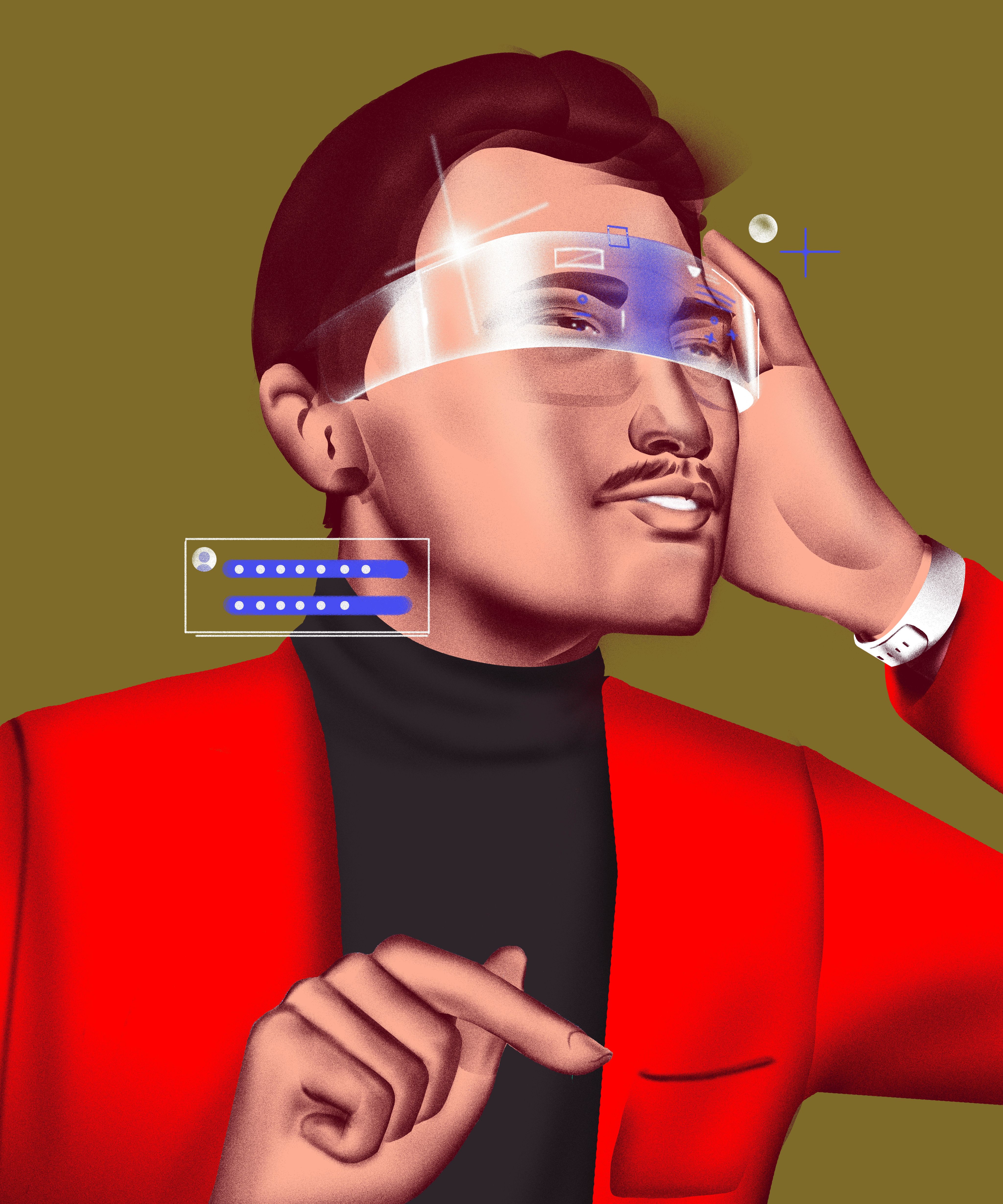
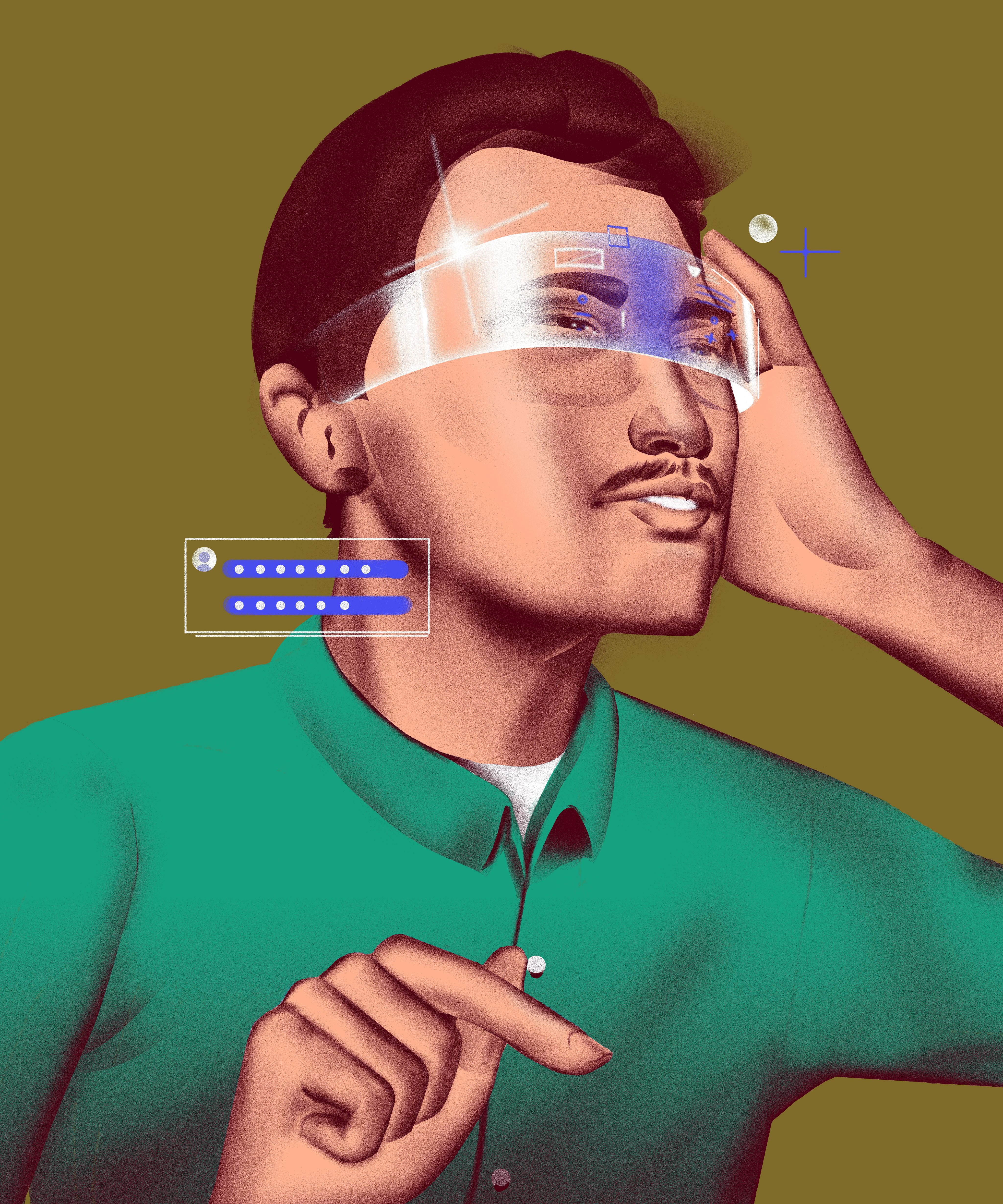

The metaverse is, in the words of essayist Matthew Ball, the successor state of the mobile internet. It can be described as a multifaceted digital experience that mirrors our physical reality and also allows for entire new types of experiences. It’s not hosted or owned by one company, but rather a virtual space where businesses, people and information interact in a 3D setting. It’s an immersive universe where you can attend a business meeting, buy a suit for said meeting and have virtual drinks with your colleagues afterward, all without physically leaving your home. It’s this and so much more. In its totality, it will become the gateway to most digital experiences and a component of physical ones.
Right now, the most common way to participate in the metaverse is through games like Fortnite or Roblox. There are also independent immersive brand experiences along with other ways to work, shop and play.
In the future, the metaverse will be something you experience and interact with through services or apps that facilitate work, play, shopping and pretty much any other activity you can think of. The barrier between the physical and digital worlds will have been lowered and people will be constantly living in or moving back and forth in via their phones, smartglasses, VR goggles, smart speakers or other technologies. While these things do exist in our world today, in the metaverse they will be hyper-powered versions that employ 5G, AI and other matured technologies to facilitate life-like interactions and visuals.
For this future to be realized, tech and brand players need to commit to interoperability. Basically, this means that you can move yourself, your possessions and any other digital assets between places in the metaverse. The idea is for a free and open space where you can easily move from one experience or event to another.
So, how far away is this future and what needs to happen for the metaverse to become a part of daily life?
There is no one thing that needs to happen or switch that needs to be flipped for the metaverse to come online. In some ways, it’s already here and it makes sense to begin strategizing how you will fit into it. As companies continue to make investments and technology like spatial cameras and 5G networks become more available, it will gradually become part of our lives. There is also a need to create protocols or rewrite the rules of the internet to enable interoperability and create expectations or ways of being in the metaverse.
Futurists and technologists are hard at work on these challenges. At the recent Dept Meta festival, people like Meta AR specialist and creative strategist Dan Moller and Decentraland head of partnerships Adam De Cata took on some of these questions and discussed things like: What does the extended self look like in the digital universe? How can brands execute next-level personalization? What is the future of ownership? These are the types of questions defining the development of the metaverse and staying on top of them will be crucial to securing your place in it.





The metaverse will redefine how brands and consumers interact. Brands have the opportunity to build fully immersive 3D worlds from the ground up. It’s kind of a creative opportunity akin to the first websites.
Soon brands will be able to augment physical experiences with virtual ones. For example, say you’re at your favorite store, browsing through a collection of this season’s jackets. Instead of just trying them on, you could pop on a pair of glasses and see how your favorite influencers are wearing the jackets or what they will look like on you, modeled on your avatar.
The potential for greater, more relevant and useful personalization is another exciting opportunity. Instead of an email that shows you a fall boot collection based on your prior browsing, brands can design individualized experiences where the consumer might be viewing the same boot collection, but in a virtual dressing room tailored to their aesthetic preferences with a live personal shopper.
The concept of digital ownership will also be key, as brands create virtual collectibles, avatar skins and tools for people to create their own virtual branded products.
It all sounds pretty cool, right? While these types of experiences might be a few years out, there are plenty of exciting opportunities in the here and now.
One of the most accessible and engaging areas is within games.
There is a lot of room to play, and brands across the spectrum are experimenting with ways to show up in games like Fortnite, Decentraland and Roblox. Within these games, brands can create whole worlds and tap into the community aspect that already exists to engage in new ways. No two branded executions have been alike, illustrating the creative potential just within games.
Coca-Cola, for example, celebrated International Friendship Day in Decentraland by auctioning off NFTs in a loot box inspired by vintage Coca-Cola collectibles. Proceeds from the auction went to charity, and players could keep the celebration going at a virtual “rooftop party” that featured a giant Coke can constructed just for the game.
Balenciaga, on the other hand, went a level deeper and created its own video game to launch its 2021 collection. Called Afterworld, the game was a high-quality immersive experience where players could game and toggle through the outfits in the collection. The game was just one of the first examples of taking physical objects into the virtual world and making them more accessible and immersive.

The metaverse will redefine how brands and consumers interact. Brands have the opportunity to build fully immersive 3D worlds from the ground up. It’s kind of a creative opportunity akin to the first websites.
Soon brands will be able to augment physical experiences with virtual ones. For example, say you’re at your favorite store, browsing through a collection of this season’s jackets. Instead of just trying them on, you could pop on a pair of glasses and see how your favorite influencers are wearing the jackets or what they will look like on you, modeled on your avatar.
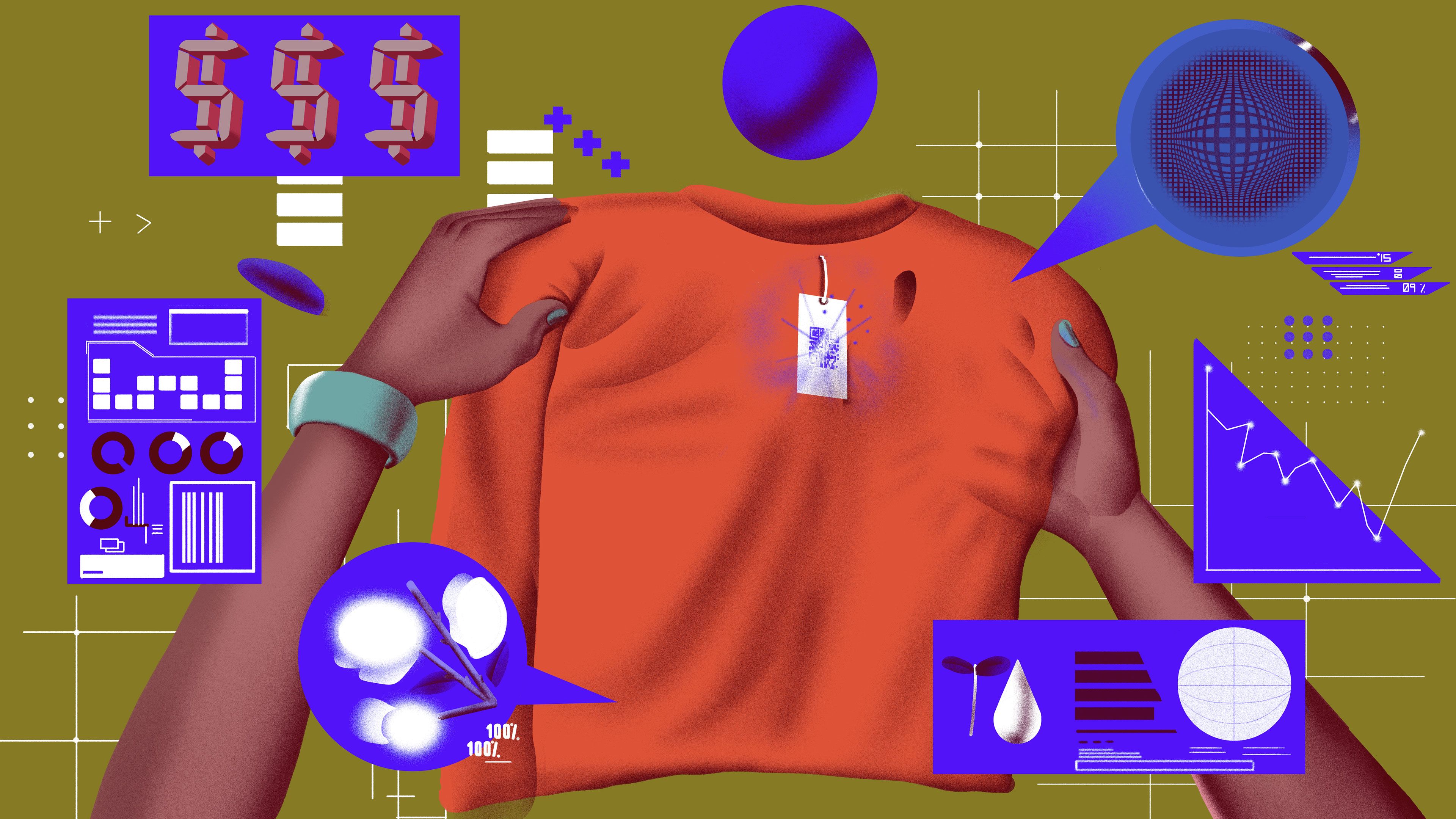
The potential for greater, more relevant and useful personalization is another exciting opportunity. Instead of an email that shows you a fall boot collection based on your prior browsing, brands can design individualized experiences where the consumer might be viewing the same boot collection, but in a virtual dressing room tailored to their aesthetic preferences with a live personal shopper.
The concept of digital ownership will also be key, as brands create virtual collectibles, avatar skins and tools for people to create their own virtual branded products.
It all sounds pretty cool, right? While these types of experiences might be a few years out, there are plenty of exciting opportunities in the here and now.
One of the most accessible and engaging areas is within games.
There is a lot of room to play, and brands across the spectrum are experimenting with ways to show up in games like Fortnite, Decentraland and Roblox. Within these games, brands can create whole worlds and tap into the community aspect that already exists to engage in new ways. No two branded executions have been alike, illustrating the creative potential just within games.
Coca-Cola, for example, celebrated International Friendship Day in Decentraland by auctioning off NFTs in a loot box inspired by vintage Coca-Cola collectibles. Proceeds from the auction went to charity, and players could keep the celebration going at a virtual “rooftop party” that featured a giant Coke can constructed just for the game.
Balenciaga, on the other hand, went a level deeper and created its own video game to launch its 2021 collection. Called Afterworld, the game was a high-quality immersive experience where players could game and toggle through the outfits in the collection. The game was just one of the first examples of taking physical objects into the virtual world and making them more accessible and immersive.

Brands that have already taken to the metaverse are just dipping their toes into what could be and so far, it’s pretty amazing. As you start to think about what your journey into the metaverse could look like, take some cues from these three brands.
Gucci x Roblox
What happened: To celebrate its 100th anniversary, Gucci created a “Gucci Garden” in Roblox. Accessible to all players, the garden let visitors fully immerse themselves in different themed rooms that spoke to the creative vision and inspirations of Gucci’s current creative director Alessandro Michele. It also hosted a store where players could purchase limited-edition avatar items designed in collaboration with Roblox creator Rook Vanguard. The virtual event took place concurrently with a real-life multimedia experience that explored similar themes in a space in Florence, Italy.
Why it worked: Beyond the high-quality concept and visuals, the experience had several things going for it. First, the tie-in with the physical world. This connection between physical and virtual is one of the most exciting possibilities that the metaverse brings. Not all Roblox Gucci stans can go to Italy, but they can get the same experience from their living rooms. Putting on celebrations like this online and IRL opens a brand up to new audiences. Second, it involved the community by partnering with user-generated content creator Rook Vanguard to develop the avatar items. By doing this, the brand showed that it wanted to be truly involved in the community, not above it or separate from it.
Ralph Lauren x Zepeto
What happened: In an experiment in virtual venues and retail, the fashion brand collaborated with Zepeto, a social networking and avatar simulation app. In the app, users can personalize 3D avatars and hang out with other users in a fully articulated virtual world. The brand created a digital clothing collection that allowed users to dress their avatars in the product and wear it as they explored digital interactive spaces modeled after the Madison Avenue Flagship store, Ralph’s Coffee Shop and Central Park. The clothing collection featured 12 looks and was designed exclusively for the digital collaboration.
Why it worked: Zepeto is far from tried-and-true territory and the brand took a risk when it entered. But that’s why it worked. By being unafraid to push boundaries and explore new spaces, the brand communicated to its audiences old and new that it was ready to be a part of the digital future. It also allowed its products and brand to be experienced in new ways by audiences that might never get to its IRL spaces in NYC or purchase physical items.
Golden State Warriors x OpenSea
What happened: NBA Top Shot has driven immense revenue from the sale of NFTs and NBA teams are now branching out into this space. Specifically, the Warriors became the first professional sports team to dive into virtual ownership when they released an official NFT collection on the marketplace OpenSea. The items available were digital championship rings for each of the team’s six NBA titles and digital ticket stubs from historic games. A portion of the proceeds went to the Warriors Community Foundation, which operates locally in the Bay Area.
Why it worked: The masterminds behind the NFTs took their time and did their research to make sure they were providing something of value and not just jumping on the latest hot thing. As Warriors president Brandon Schneider told ESPN, they had been studying what the best way to get involved was and how they could provide something of real value to fans. They didn’t try to make things too complicated; they took what they knew about their community and repurposed it for the digital world. By donating a portion of the proceeds, they also showed that their values in the real world are easily transferable to the metaverse.
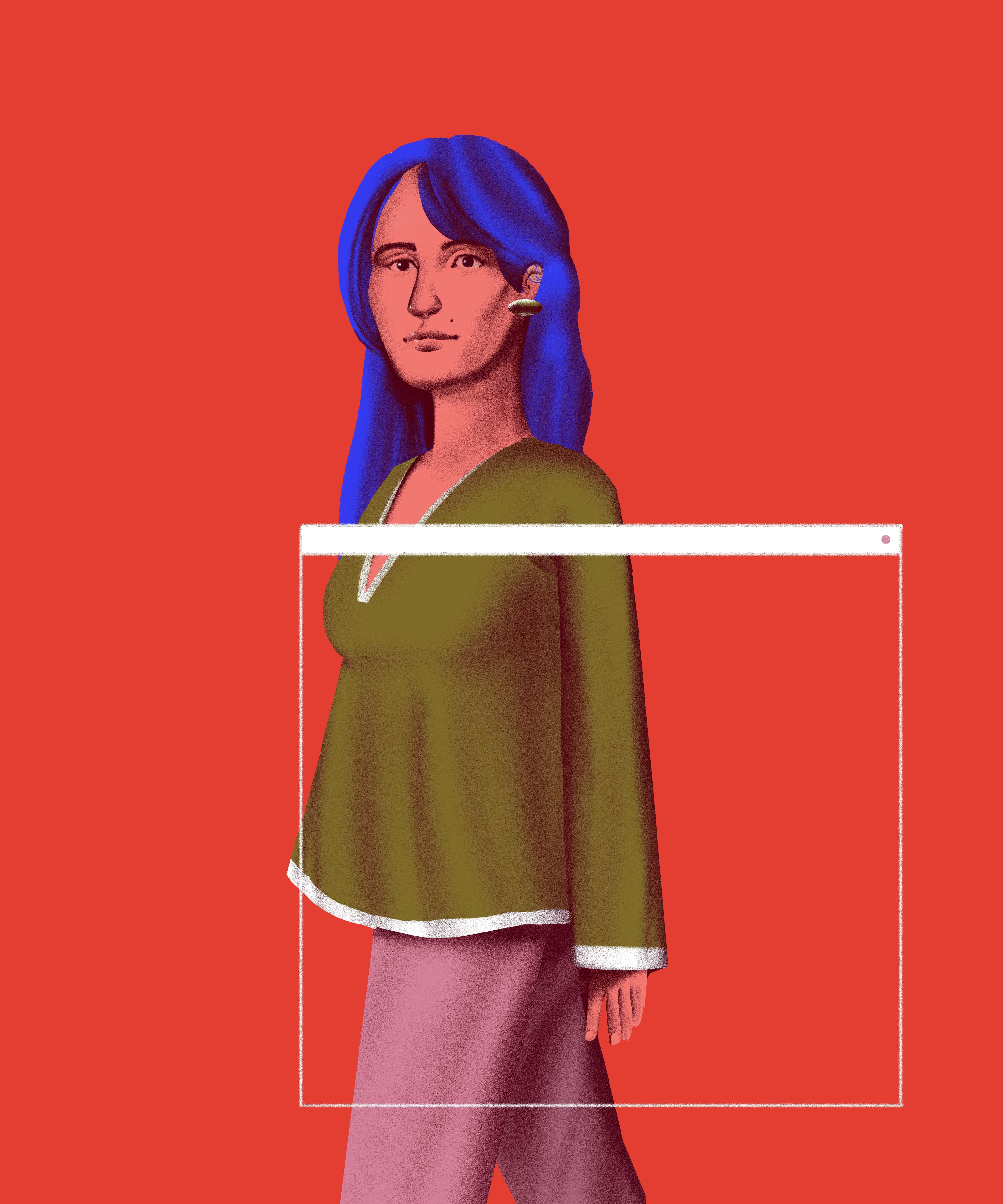
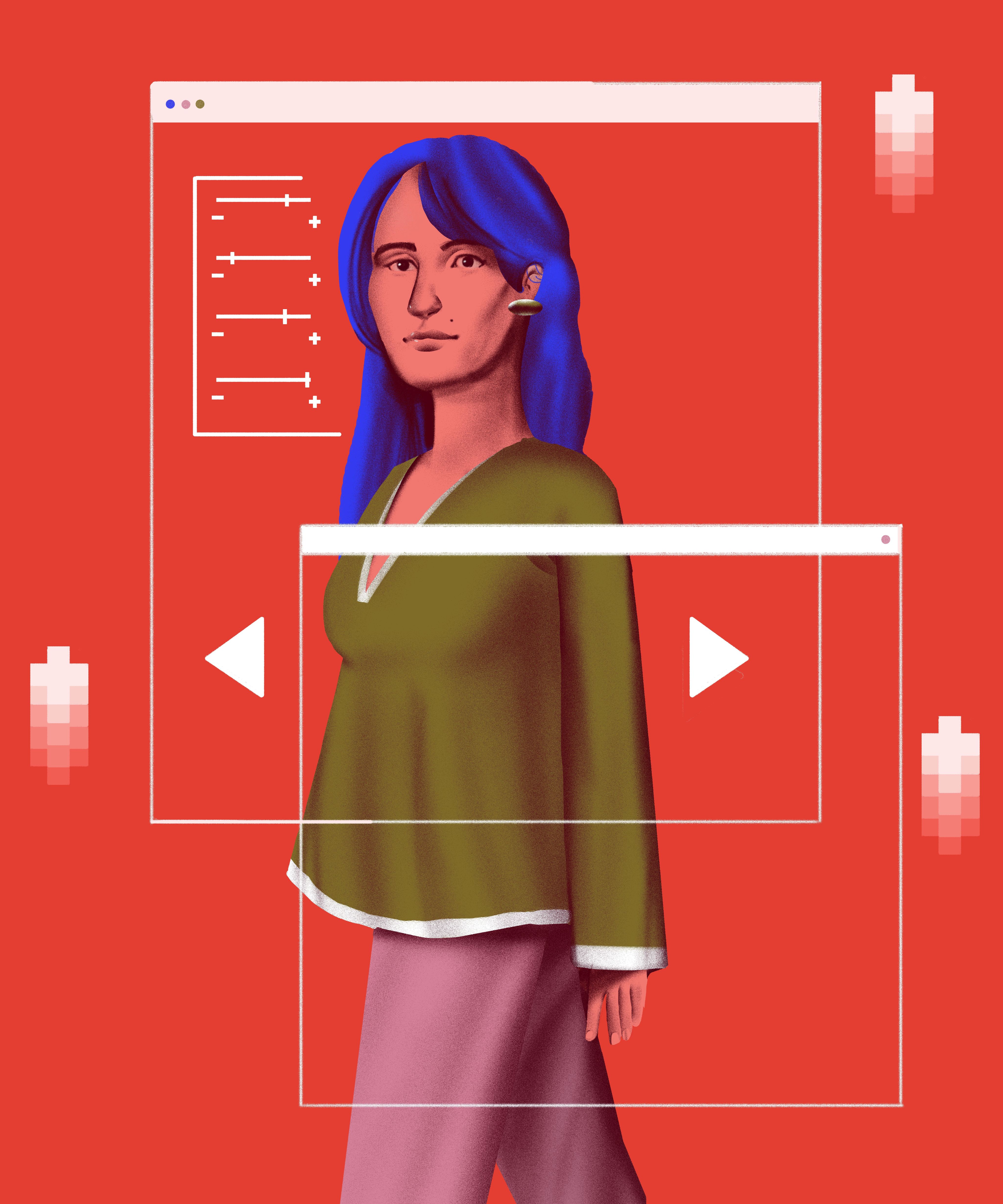
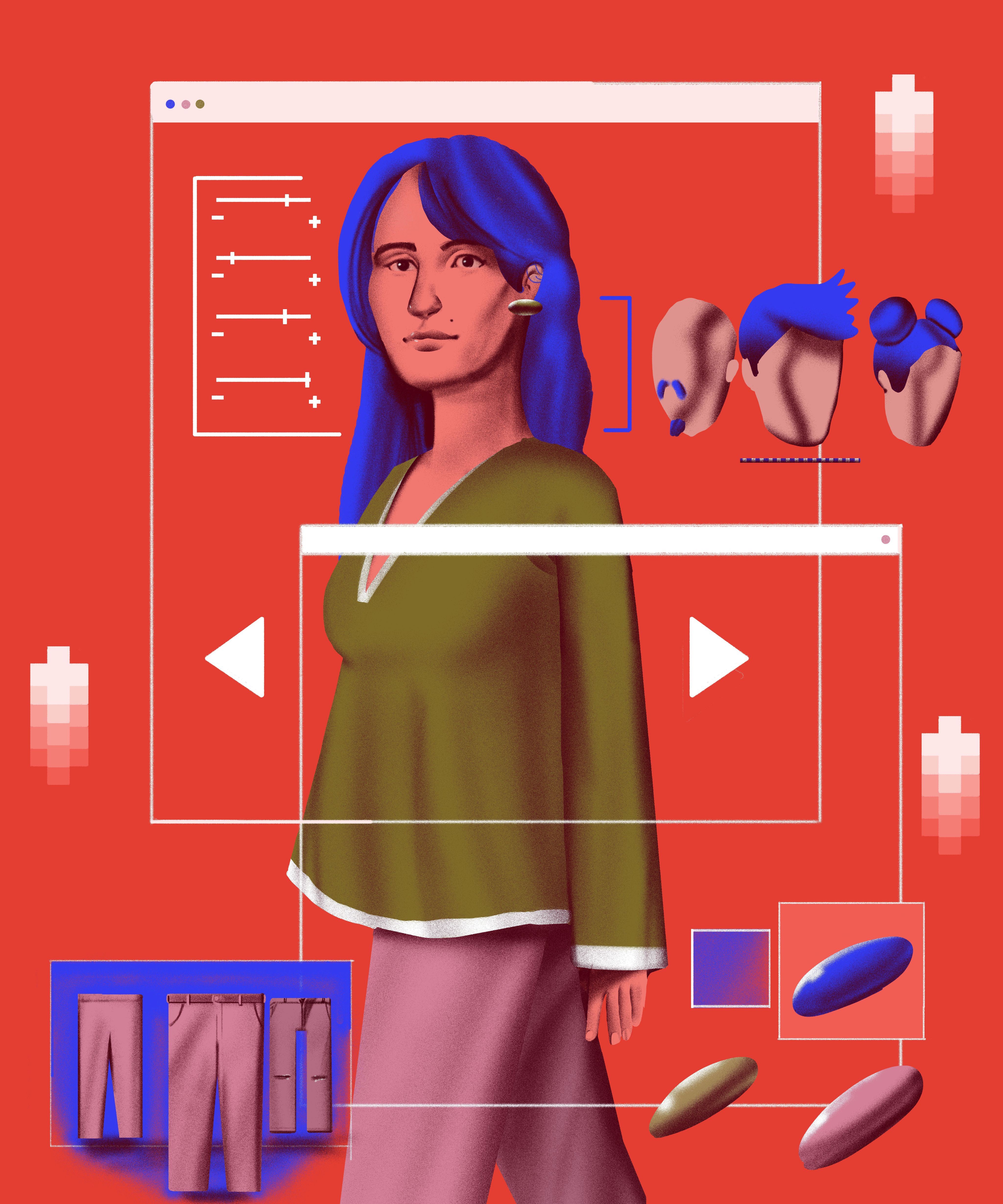

Brands that have already taken to the metaverse are just dipping their toes into what could be and so far, it’s pretty amazing. As you start to think about what your journey into the metaverse could look like, take some cues from these three brands.
Gucci x Roblox
What happened: To celebrate its 100th anniversary, Gucci created a “Gucci Garden” in Roblox. Accessible to all players, the garden let visitors fully immerse themselves in different themed rooms that spoke to the creative vision and inspirations of Gucci’s current creative director Alessandro Michele. It also hosted a store where players could purchase limited-edition avatar items designed in collaboration with Roblox creator Rook Vanguard. The virtual event took place concurrently with a real-life multimedia experience that explored similar themes in a space in Florence, Italy.
Why it worked: Beyond the high-quality concept and visuals, the experience had several things going for it. First, the tie-in with the physical world. This connection between physical and virtual is one of the most exciting possibilities that the metaverse brings. Not all Roblox Gucci stans can go to Italy, but they can get the same experience from their living rooms. Putting on celebrations like this online and IRL opens a brand up to new audiences. Second, it involved the community by partnering with user-generated content creator Rook Vanguard to develop the avatar items. By doing this, the brand showed that it wanted to be truly involved in the community, not above it or separate from it.
Ralph Lauren x Zepeto
What happened: In an experiment in virtual venues and retail, the fashion brand collaborated with Zepeto, a social networking and avatar simulation app. In the app, users can personalize 3D avatars and hang out with other users in a fully articulated virtual world. The brand created a digital clothing collection that allowed users to dress their avatars in the product and wear it as they explored digital interactive spaces modeled after the Madison Avenue Flagship store, Ralph’s Coffee Shop and Central Park. The clothing collection featured 12 looks and was designed exclusively for the digital collaboration.
Why it worked: Zepeto is far from tried-and-true territory and the brand took a risk when it entered. But that’s why it worked. By being unafraid to push boundaries and explore new spaces, the brand communicated to its audiences old and new that it was ready to be a part of the digital future. It also allowed its products and brand to be experienced in new ways by audiences that might never get to its IRL spaces in NYC or purchase physical items.

Golden State Warriors x OpenSea
What happened: NBA Top Shot has driven immense revenue from the sale of NFTs and NBA teams are now branching out into this space. Specifically, the Warriors became the first professional sports team to dive into virtual ownership when they released an official NFT collection on the marketplace OpenSea. The items available were digital championship rings for each of the team’s six NBA titles and digital ticket stubs from historic games. A portion of the proceeds went to the Warriors Community Foundation, which operates locally in the Bay Area.
Why it worked: The masterminds behind the NFTs took their time and did their research to make sure they were providing something of value and not just jumping on the latest hot thing. As Warriors president Brandon Schneider told ESPN, they had been studying what the best way to get involved was and how they could provide something of real value to fans. They didn’t try to make things too complicated; they took what they knew about their community and repurposed it for the digital world. By donating a portion of the proceeds, they also showed that their values in the real world are easily transferable to the metaverse.

Now that you know what the metaverse is and what opportunities exist, it’s time to get to work. Here’s what you need to do to kickstart your journey.
Find your community
Who your audience is in the metaverse might not be the same as it is in real life. For example, the IRL Sotheby’s customer is very different than the one shopping for NFTs in the metaverse. Be open-minded to the fact that you might not be speaking to your traditional target audience in the metaverse, but introducing your brand to a whole new one instead.
Determine your why
Don’t enter the metaverse just because you can. Find a specific event or reason for being in the space. For example, a product launch, an anniversary celebration or digital extension of an event you’re hosting in real life. However, don’t wait forever to find this why and let your competitors get there first.
Uncover what you don’t know
You might not yet have the technical resources of a brand like Gucci, but that doesn’t mean you are shut out of the metaverse. Determine where you are lacking technology or expertise before getting too far into content planning. Take advantage of the fact that there is no one way to enter the metaverse. You can start small and test and learn before making a huge investment.
Make sure metaverse executions have a place in your larger strategy
The metaverse doesn’t exist in a vacuum and it should be a part of your larger omnichannel strategy. Determining where it fits in will be key to success. Part of this is making sure you have resources to promote the event. If you don’t push it across your other channels, no one except those already in the metaverse will know it’s happening.
Keep learning
The metaverse is still evolving and changing. It is crucial to stay on top of new developments. Stay updated on what other brands are doing and how and where the big tech companies are investing. The future is exciting and being in the know will be crucial to finding your place in it.
Illustrations by Richard A. Chance

Dept is a digital agency for creativity, technology and data. It helps its clients build and accelerate their digital business by creating leading digital products, services and campaigns. Its team of over 2,000 thinkers and makers spans 16 countries across five continents. Dept proudly works with top brands like Patagonia, Samsung, Bose, Formula E, Bugaboo, Indigo Ag, Triumph Motorcycles, Netflix and more.


 Built with Shorthand
Built with Shorthand





